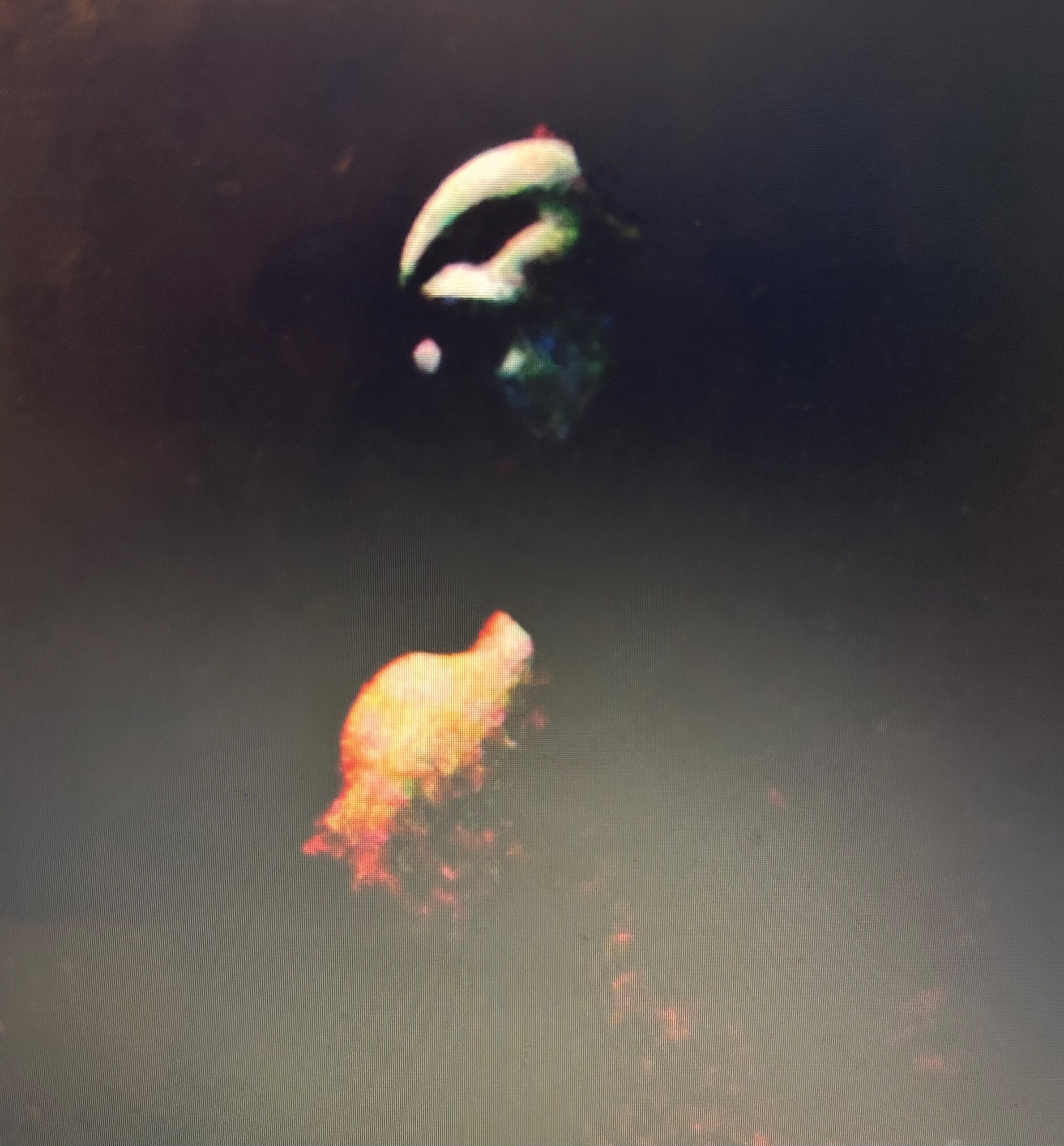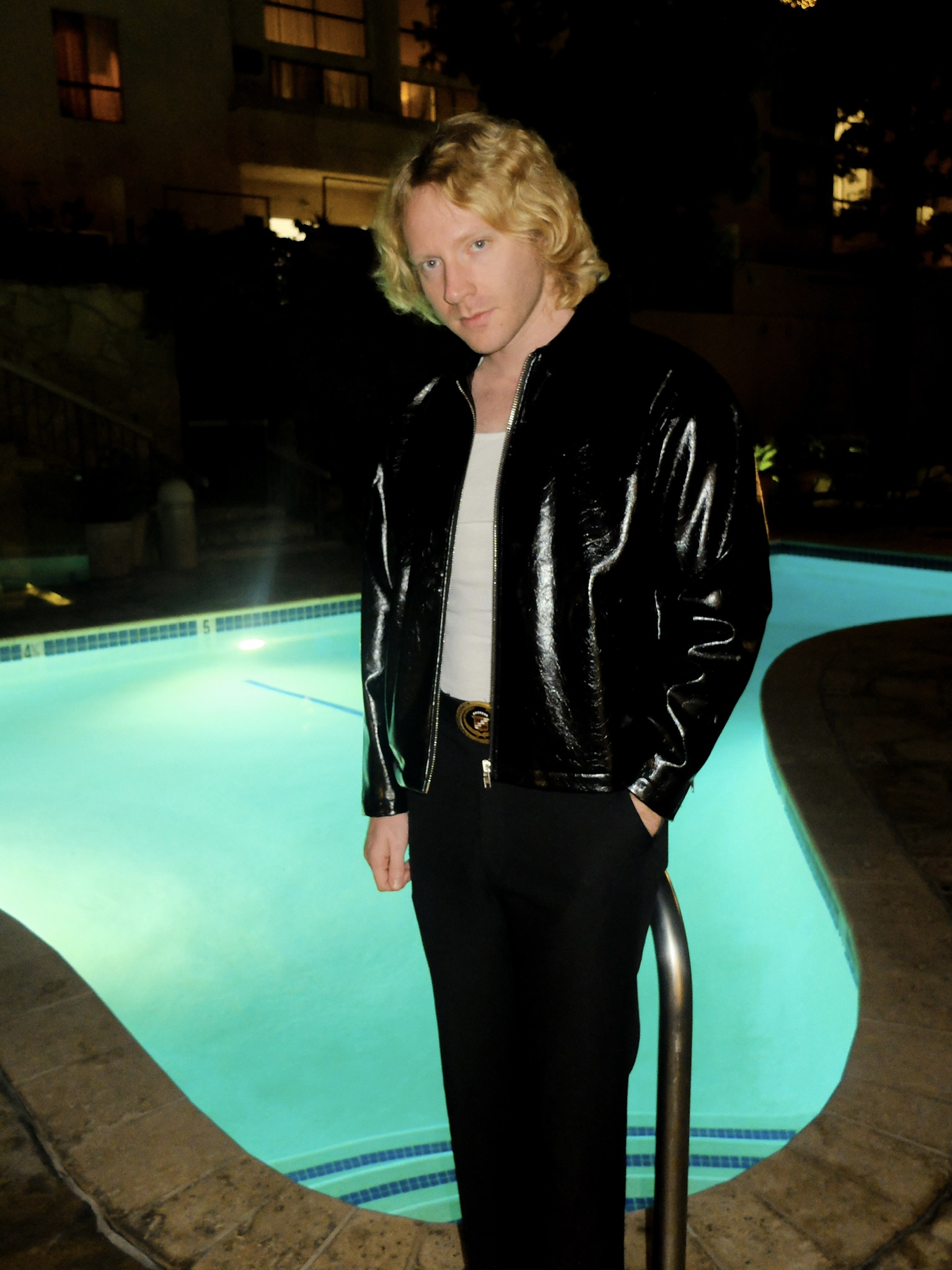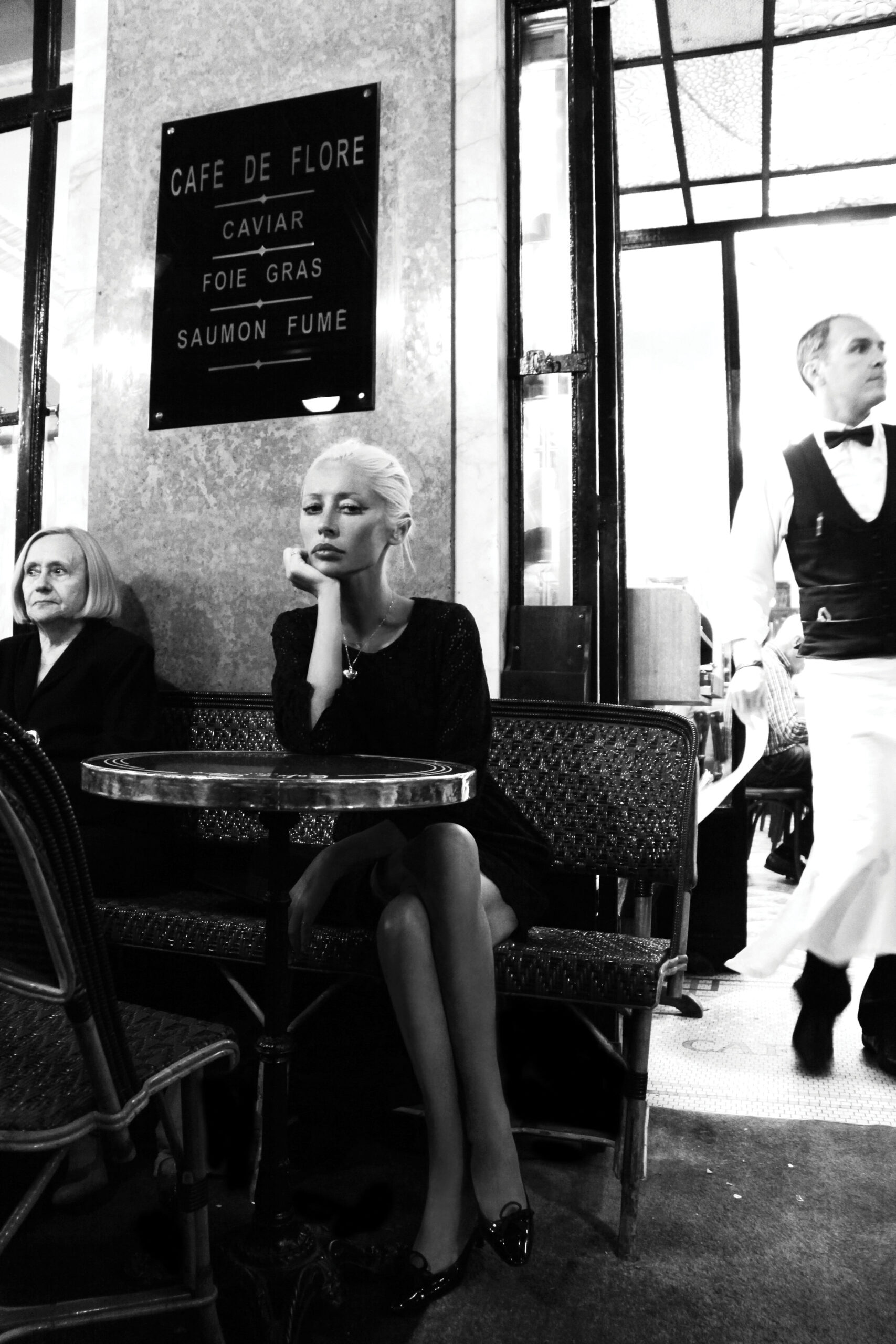Published in Ritsuko 1
Tavora Léa is the artist name of Kalob Petty, a Texan living in North Carolina (with the painter extraordinaire Dakota Proctor, believe it or not) and a brilliant musician with a new album and EP titled Pain System and Cinderella, respectively. In this interview, Kalob shares some of the behind-the-scenes of his latest records, including his thoughts on his favorite film, the appeal and failures of gen-X nihilism, the necessary cruelty of Art the Clown, and the origin & future of “Tavora Léa.”
Album art courtesy of Kalob Petty
Ryan Simón: It’s wild that your album Pain System is a bedroom album, that you just made this at home, because the level of production on it is insane. It’s really layered and masterful.
Kalob Petty: I really appreciate that.
RS: You said to Kelby on Agitator that watching Gaspar Noé’s Climax is what kicked this project off, right? I noted the screaming Climax sample on the album’s final track, “Climax.” What’s the story there?
KP: Yeah, so Climax is probably my favorite movie in general.
RS: No way? That’s partly why I’m interested: it’s my favorite Gaspar. I love it so much.
KP: It’s incredible. I love Gaspar Noé in general, but I remember the first time I saw Climax, it blew me away. It’s one of those movies where it’s kind of light and fun — because for Gaspar it was light and fun — but every time I go back to it, as soon as it starts, there’s this dark edge to it. I’m like, Oh yeah this IS a fucked up movie. You know what I mean? It’s really weird and dark. And so yeah I remember specifically being so inspired by Climax. I was in a weird place at the time. I was living at my mom’s. I felt very suffocated by everything. It sucked. But that movie reminded me of what it’s like to be a freak, to be able to just create shit and have fun. I was tripping the second time I watched the movie — I don’t do that shit anymore, but at the time I was — and all these ideas just started pop up in my head. I sat down and hit a note on my keyboard, just zapped out. [Laughs] I was like, Oh man, this is nuts. Somehow a song came out of that, and that’s the last song on the record. “Climax.” I just loved how insane her shrieking is in that scene where she’s losing her shit. There’s not a lot of audio around that piece, so I figured it’d be easy to sample. That sample I got a lot of mileage out of because it ended up sprinkled all over the entire record.
RS: I was amped when you mentioned Climax because I had a similar experience with it. I took edibles when I first saw it and somehow totally missed the acid sangria plot point — basically the whole premise of the movie [laughs] — and so when shit started going South, I had no idea what was going on. I just thought some abstract, ambient sense of dread, or a demonic force, had descended on this group, or like the main girl just had some spontaneous moral awakening while drunk — or whatever, it doesn’t matter — and all I could think was, This Gaspar guy is nuts. It blew my mind. When the title sequence hits in the middle of the movie, it’s one of those moments where you’re like, You can just do this? Why isn’t every director doing this? I came to the same realization: well, I’ll do it. I’m going to be a freak too and create shit and have fun.
KP: Gaspar’s a real artist. He’s got this fucking energy behind his stuff that pumps up other people. It’s like a Kanye thing. Kanye does the same thing for me personally.
RS: Same.
KP: And what you just said, that title sequence right in the middle of the movie. Every time that shit drops and it has that beat going, I’m like, Man, this is incredible. You can just do that.
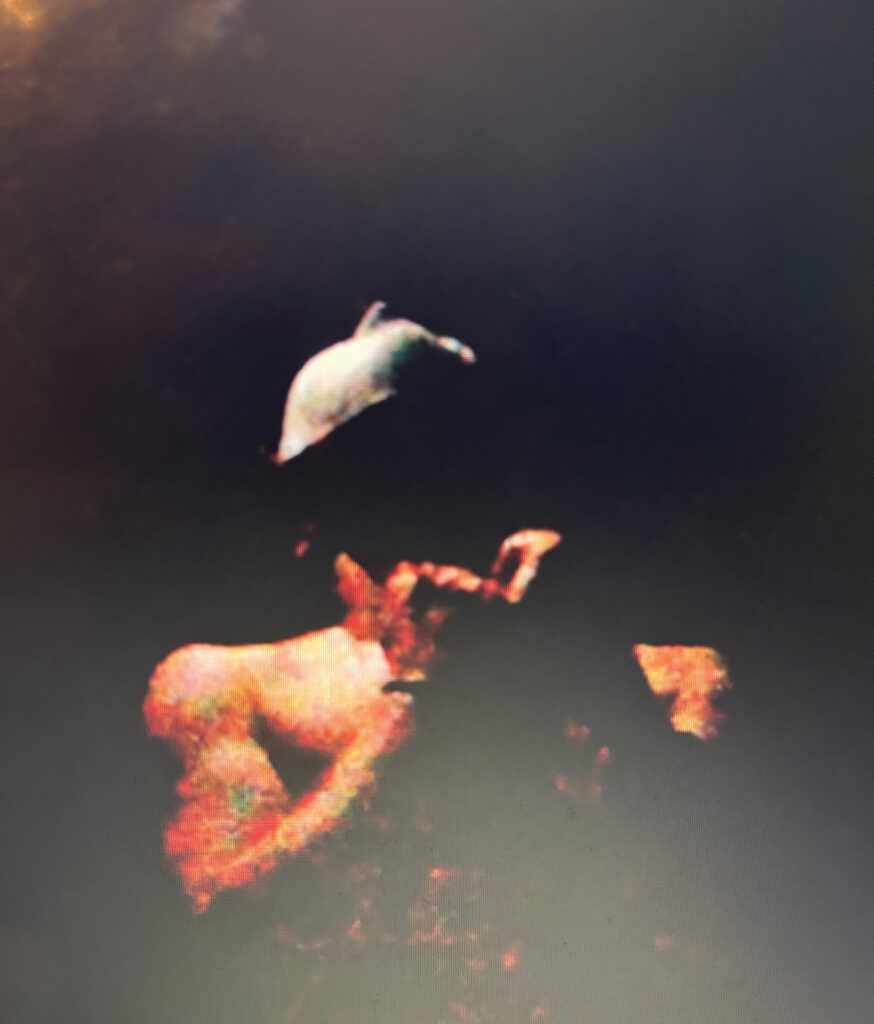
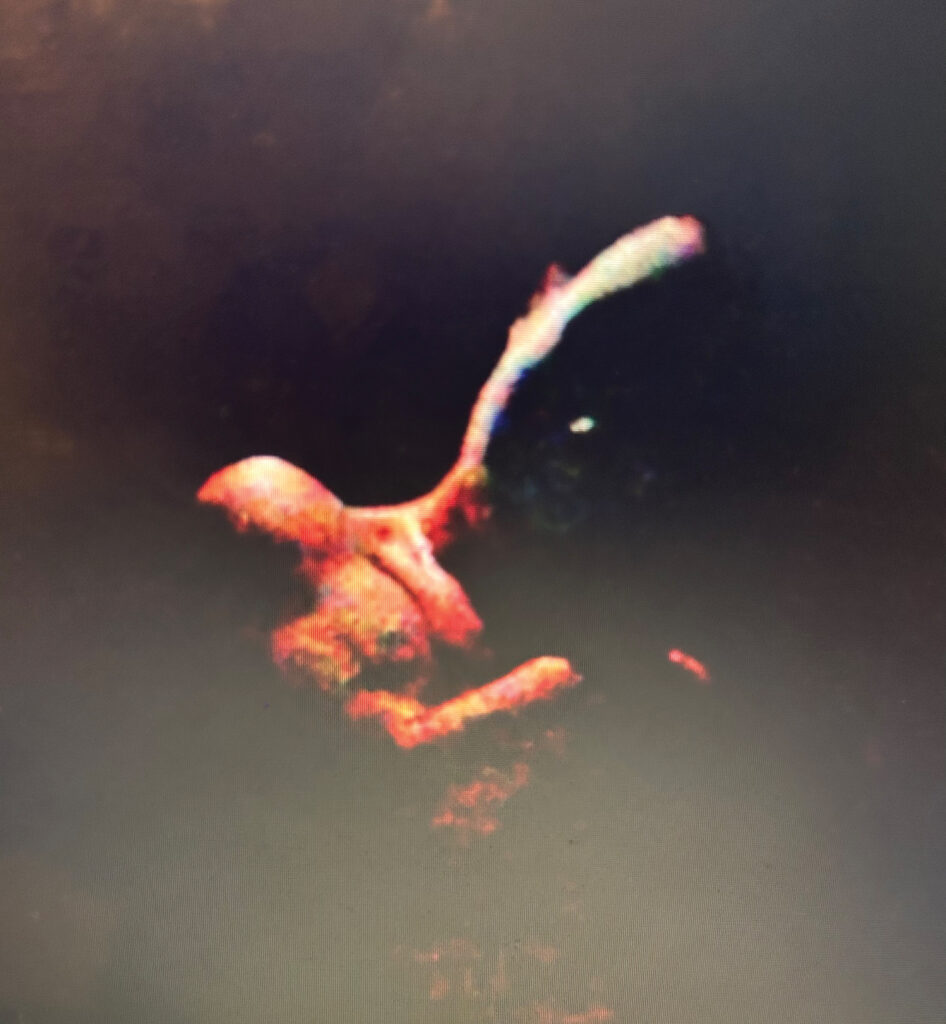
RS: Do you think of Pain System as a concept album? Like when did the overall idea or concept of this album start to reveal itself to you?
KP: I wrote a lot of these songs two or three years ago. Originally, I put them out as an EP, but it didn’t feel very realized. There wasn’t a real band idea, a real project idea, real album idea, whatever. The artwork was weak. I didn’t have a good name for it. I didn’t know anybody at the time, so it was just thrown into the void. I dropped it because I wasn’t going to pay money for it for no reason. You know, it is what it is. I stepped away for a long time and then, oh, I don’t know… maybe a year-ish later I started to revisit it. I had written some other songs, and then all of sudden I just decided to do something. It must’ve just been a weird week because I just sat down with all these songs and I started wondering if I put all the files into the same project folder on the DAW, or whatever, could I do the Pink Floyd thing, like connect the songs and see if it works. I was shocked because every time I would do something, it was working. I was like, Oh shit, this is kind of cool. A year later, I had a full ass project, but then I sat on it for about half a year or so. I finished that record before I moved to North Carolina, before I moved in with Dakota, and I think just being in this new environment — moving out of state, living on my own, living with a roommate, all this new shit — something just started to click where I was like, I’m going to put this out. Just as soon as I started to get the idea to put it out, the record came together — the album art, the idea — and I was in bed one night when the name “Tavora Léa” came to me. I thought, Okay, this all works. I’ll put it out now and it’ll probably be better than last time. And it has been.
RS: I have a bad habit of relating every “dark” concept album to Nine Inch Nail’s Downward Spiral. I need to update my references… but whatever, I love that album, and I was thinking of Downward Spiral listening to Pain System, which, at least structurally, seems to go on a similar journey to Downward Spiral. Even down to your use of interlude tracks — like your “Raphael (Interlude)” track, with its placement near the album’s end. That one reminds me of “A Warm Place” from Downward, in the way that it’s a final, momentary, uhm… reprieve? I guess you could say, from the rest of the album’s darkness. Downward ends with that “I hurt myself” moment of self-realization. Your final song “Climax” similarly repeats the line “I suffer”…
KP: And then it goes into what I thought of as the “pain system,” which is this jolt of energy and it’s like the woman’s being tortured.
RS: And there’s the crying baby at the start of the album. This is kind of psychotic, and this is no exaggeration, but for the past two years, I’ve been playing Max Payne on repeat — like if I have 10 minutes of free time working on my computer, I’ll play a little Payne. That game opens with, you know, the infamous dead baby and has the nightmare sequences full of crying baby audio. It’s so fucking dark. But, yeah, that came to mind listening to your album — maybe because Max PAYNE, PAIN System. [Laughs] I don’t know. Oh, and also the Terrifier movies, which you directly reference in the track titled “Terrifier (Archangel).”
KP: I wrote that song when I lived in Austin. I became obsessed with Terrifier right around the time the record was about to come out, and I was like, I’m sure I can find a space to do a Terrifier nod. That song had a title that really wasn’t that important, so I slapped the “Terrifier” title on there instead. “Terrifier (Archangel)” worked as a Terrifier nod, but it also connected to theme of the record. “(Archangel)” goes into “(Don’t) Sell Me” and then I think “(Don’t) Sell Me” goes into the actual archangel prayer [“Raphael (Interlude)”], so there’s a connection there.
RS: The archangel connection. Yeah, I like that you’ve leaned into the Christian ethos of Terrifier in your album. Terrifier 2 and 3 especially have a sincerely religious sense of good and evil that’s mostly absent from all other slasher films. That, for me, is what differentiates Pain System from Downard Spiral, too, because that era of early ‘90s gen-X grunge atheism doesn’t leave much room for spiritual redemption — it’s all fairly empty and nihilistic — whereas your album does.
KP: It’s really cool you brought that up because I’ve been getting a lot of comparisons to Marilyn Manson, and now you’re bringing up Nine Inch Nails — Marilyn Manson, Nine Inch Nails, they’re like this [weaves fingers], you know. They’re very close. I really like that I’m drawing those comparisons because I do like the idea of being some sort of new age non-nihilistic Marilyn Manson, or something like that. I love Marilyn Manson too.
RS: Same.
KP: I like him as a figure. I love how far out he is. I love how dark and angry his music is. I’m just not a nihilist.
RS: Well, we’ve seen the fate of that generation. All that transgression for transgression’s sake didn’t really do anything, and they’re making up for that now by being hysterically political gen-Xtards. [Laughs] And they all wear those big stupid glasses.
KP: I wish Marilyn would stop with the makeup now.
RS: Yeah, him and even Eminem — I’ll always love Eminem, but he’s so aggressively corny now.
KP: It’s bad.
RS: To be fair, the aesthetics of that generation were really cool. I’m definitely borrowing a lot from it for this magazine. But, yeah, a lot of artists failed to age out of that era. Marilyn still in makeup or Eminem still, you know… [laughs] frowning like a teenager. It’s like, Alright, dude, you’re 50 now. You’re 50 and you’re frowning. What is your problem? Oh, you’re 50 and you still think graffiti is cool? Hell yeah, dude… I like how they all tested the bounds of free speech, but without a greater purpose, a lot of their “rage,” or whatever, just seems very fake and short-sighted now.
KP: That’s a big reason why I really like horror, and I love horror that isn’t totally nihilistic. I think that’s what’s cool about Terrifier. It’s really funny to see weird Reddit people try to figure it out. Their comparisons and their explanations for what Terrifier is — the movie went so over their heads, it’s nuts. They call it “gore porn,” shit like that. Like that’s all it is. I’m like, Look, just because there’s a naked woman getting the shit kicked out of her doesn’t mean it’s nihilistic. Because the thing about Art the Clown is that he’s pure evil. Pure evil targets the most innocent, so if you want to actually depict evil, you have to depict violence against women and children.
RS: I think it was Huysmans, who fell out of and then back into Catholicism, who defended the works of the Marquis de Sade, like, If you know de Sade, you know evil, and if you know evil, you know good. It’s like Glen Rockney of Rare Candy calling Black Sabbath a Christian rock band. [Laughs] Which they basically are. Without being preachy too. If anything, Black Sabbath, Terrifier, Huysmans, they all understand the allure of darkness, they all participate in it, but they’re not “subverting” right and wrong, good and evil, whatever. Everything is being properly depicted without judgment, and that does go over the heads of Reddit.
KP: People who are afraid of their own darkness and who lean towards censorship to avoid exploring those dark areas — you should be way more worried about people like that than depictions of evil.
RS: Totally. God, those people… [laughs] they’re so unpleasant.
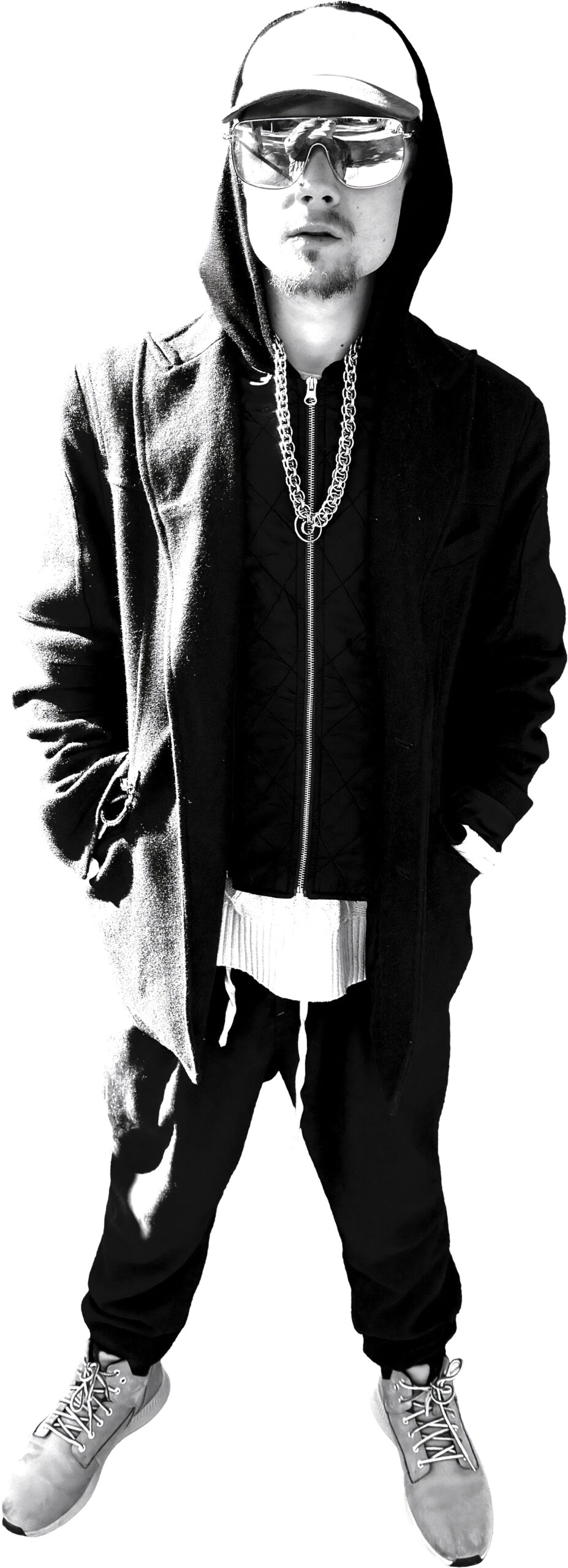
KP: That [Huysmans] quote you said, that’s the approach I’ve always wanted to take with art. I think that’s why I’m so drawn to darker things. Portraying dark themes, or evil, just makes it so much easier to highlight, you know… brightness.
RS: I do like your song “Brains!” with The Shining sample though. [Laughs] I’ve probably listened to that one the most, and it’s just pure violence, pure shit talk. That one must’ve felt good to put together.
KP: It was so great. That’s not a serious song at all. It was very cathartic. I was just getting shit out. I actually think it’s a funny song.
RS: It is funny. In the same way The Shining is funny.
KP: I love the use of that sample, where he’s like, “I’m not gonna hurt ya. I’m just gonna—” and then the beat slams. I had a music video idea for it that immediately went in a goofy direction, too. That’s a very playful song. It was mostly just catharsis on my end.
RS: I’m hyped you dropped the Cinderella EP today too, so I could listen to it before this. Tracks like “Loverboi” and “Lipstick (Fuck Factory)” — there’s some romance on this record.
KP: I looked at this record as a love record. I thought of it as a horror romance record. I thought “(Fuck Factory)” was really funny. It’s a companion piece to Pain System in the sense that it’s aesthetically similar. Originally, it was going to be the album’s B-sides, but it started to take its own form as I was putting it together.
RS: The visuals for these I like. They immediately stood out to me. How did they come together?
KP: One of my favorite things about the album and EP is the artwork. A lot of people have hit me up about the record and they’ve been really cool, but the first person to say something about the album art was Jack Mason. He said that he didn’t know it was me and that that drew him in — that it was really intriguing. I was really happy about that, and that that’s something that stood out to you. I was making a song that’s not on either of these records, and I was trying to do a fucked-up home music video thing. I put on Photo Booth to record the video, and at the time my mom, she bought this pack of weird blank masks for some reason. [Laughs] I put a mask on, I took my shirt off, and I started recording, I put on the song I was working on, and I straight-up flailed around, just writhing around. The video is so dumb. It’s so ridiculous, but it looked kind of cool. I stopped the vid frame-by-frame and I noticed I hit a lot of weird poses, and I took pics of them off of my phone. The one that is Pain System I really liked, like there’s a weird vibe here I think is very cool.
RS: You didn’t do any color-editing or anything like that to them then?
KP: No, that’s just how it came out.
RS: I do the same thing when I need to take photos of myself: take a vid and just isolate the frames I like. Otherwise, posing in front of a camera for like a single shot, or whatever… [laughs] it feels so gay. Like I’m going to set up a camera by myself and look at it and pose with a serious face, or something… Although the videos themselves are very embarrassing, too. I get the still-frames I need and then immediately delete the video forever. But, yeah, your photos, the sort of rusty flesh tone — it’s very Silent Hill nightmare. That they’re photos of photos on a screen too lend to their eeriness.
KP: The original name of the LP was “Nightmare.” The other thing that’s cool about them being on a screen is how the album starts off with “Snuff.” However you want to interpret the image, the person in the photo — whether that’s the dark entity in the album or something else — I just thought there was something interesting about the photo being on a screen connected to a snuff film. None of this shit was really planned out, but there are so many ways it all connects to itself. It was really cool watching this come alive in that way.
RS: Where did the name “Tavora Léa” come from?
KP: I was in bed one night and I couldn’t sleep, so I started looking up names — foreign names — for this project. Specifically feminine names because I wanted it to be pretty. Tavora Léa are two feminine names. I think Tavora is Hebrew and Léa is French, and Tavora has a sort of negative connotation, like it means “abomination” or “detestable,” and Léa translates to “meadow” or “weary.” I liked the combination of those meanings, and then when you put them together, it just rolls off the tongue. Tavora Léa.
RS: Is Tavora Léa just for these projects, or are you going to keep rolling with it?
KP: I think so. I like how it’s feminine and pretty while having a negative meaning behind it. I think that ties into the vibe of what I’m doing. Tavora Léa is a continuing project. I imagine that I’ll have a different project too because I have a batch of more singer-songwriter-y songs that I don’t think translate to Tavora. Tavora Léa will be more electronic and esoteric and fun and strange in that way, and then I’ll do more regular shit for something else. I’m just excited about Tavora because I think I have another record in the works. I was messing with some shit before we did this call. So far, I have a folder with seven songs on it, and I’ve already got the album art and theme in my head. I’m really hoping I can make another full-length pretty soon, and then maybe I’ll take a break with Tavora and jump onto this other shit. I have an idea for that too.


